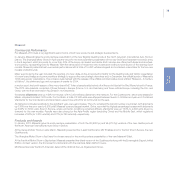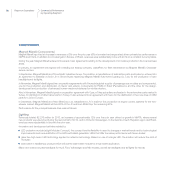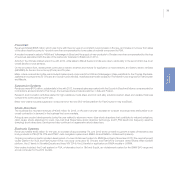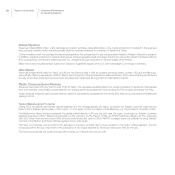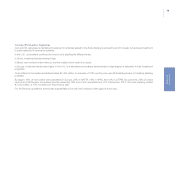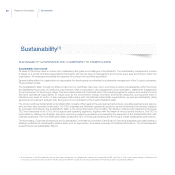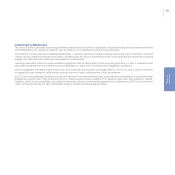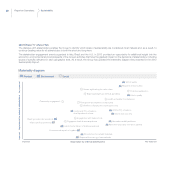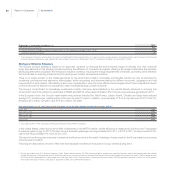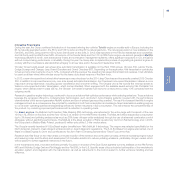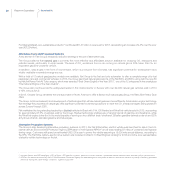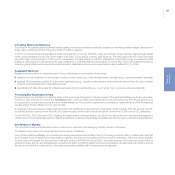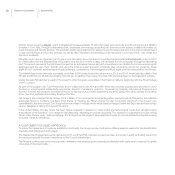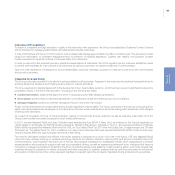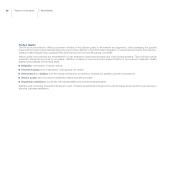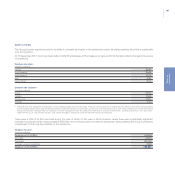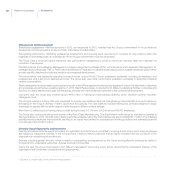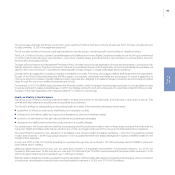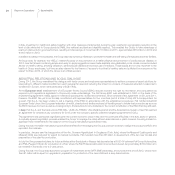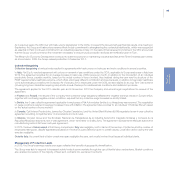Chrysler 2013 Annual Report Download - page 86
Download and view the complete annual report
Please find page 86 of the 2013 Chrysler annual report below. You can navigate through the pages in the report by either clicking on the pages listed below, or by using the keyword search tool below to find specific information within the annual report.
85
Report on
Operations
Innovative Powertrains
During the year, the Group continued introduction of the award-winning two-cylinder TwinAir engine on models sold in Europe, including the
65 hp naturally-aspirated version, the 85 hp and 105 hp turbo and the 80 hp natural gas turbo. The natural gas version is now available on the
Fiat 500L and 500L Living and the 105 hp turbo (introduced on the 500L in 2012) was launched on the Fiat 500 hatchback and convertible,
the Fiat Punto and the Alfa Romeo MiTo. All versions of the TwinAir family and the 170 hp FIRE Turbo engine use second generation MultiAir
technology (MultiAir II) which, with advanced air intake and combustion management systems, offers significant reductions in CO2 emissions
without compromising performance or drivability. During the year, the Group also completed the process of upgrading all gasoline engines to
comply with Euro 6 emissions standards that will apply to all new cars sold in Europe from September 2015.
Chrysler Group’s eight-speed rear-wheel-drive automatic transmission is available on the Ram 1500 pickup, Chrysler 300, Lancia Thema,
Dodge Durango and Charger, Jeep Grand Cherokee and Grand Cherokee SRT. Depending on the application, this transmission contributes
to fuel economy improvements of up to 12%, compared with the previous five-speed and six speed transmissions it replaces. It will ultimately
be used on all rear-wheel drive vehicles except for the heavy-duty diesel versions of the Ram truck.
In 2013, a new nine-speed front-wheel-drive transmission was introduced on the 2014 Jeep Cherokee and the recently unveiled 2015 Chrysler
200. In addition to improved fuel economy over a six-speed automatic transmission, the Cherokee’s nine-speed transmission delivers a more
responsive driving experience, including quicker acceleration and smoother shifting. The Chrysler 200 is the world’s first mid-size sedan to
feature a nine-speed automatic transmission, which comes standard. When equipped with the available award-winning 3.6L Pentastar V-6
engine, which delivers best-in-class 295 hp, the Chrysler 200 sedan’s highway fuel economy is improved by nearly 13% compared with the
outgoing model.
Research in gasoline engine technology continued to focus on solutions that optimize performance while reducing emissions. Those solutions
leverage the synergies offered by complementary technologies, such as modern turbocharging systems coupled with the performance
characteristics of the second-generation MultiAir system and use of exhaust gas recycling systems. The result is increased flexibility in engine
management and, as a consequence, the potential for reductions in both fuel consumption and emissions. New transmissions enabling engines
to run at lower operating speeds (downspeeding) will lead to further reductions in fuel consumption. This will enhance the competitiveness of
the product, by combining improved performance with a reduction in operating costs.
For diesel engines, the MultiJet II with Injection Rate Shaping (IRS) technology was extended to the entire range with the launch of the new
120 hp 1.6L version on the 500L and the new 150 hp 2.0L version on the Alfa Romeo Giulietta. The MultiJet II offers reduced fuel consumption
(up to 3% lower) and polluting emissions (as much as 20% lower nitrogen oxide emissions) through the use of advanced combustion control
strategies, without sacrificing performance. The MultiJet is the latest evolution of Fiat’s revolutionary Common Rail technology and, in 2013,
the Group plant in Bielsko Biala, Poland, produced 5 million units of the 1.3-liter version alone.
The Group’s recently-launched V-6 EcoDiesel engine benefits from Fiat’s MultiJet II technology. The engine was adapted specifically for the
North American market to meet stringent emissions and on-board diagnostic regulations. The 3.0L EcoDiesel V-6 engine was named one of
Ward’s 10 Best Engines for 2014 and contributed to the 2014 Ram 1500 being named Motor Trend Truck of the Year.
Research activities focus on two main areas: continued evolution of the injection and combustion process, aimed at increasing engine output
and reducing noise, and the study and development of innovative solutions to reduce polluting emissions, particularly nitrogen oxides, which
will be subject to further legislative restrictions in the future.
In the transmissions area, innovation activities primarily focused on evolution of the Dual Clutch systems currently available on the Alfa Romeo
MiTo and Giulietta, Dodge Dart and Fiat Viaggio and the Fiat 500L in the U.S. Specific areas of focus included optimization of the mechatronic
actuation system and integration with the transmission, as well as refinements to the control system to further enhance handling and fuel
efficiency.


